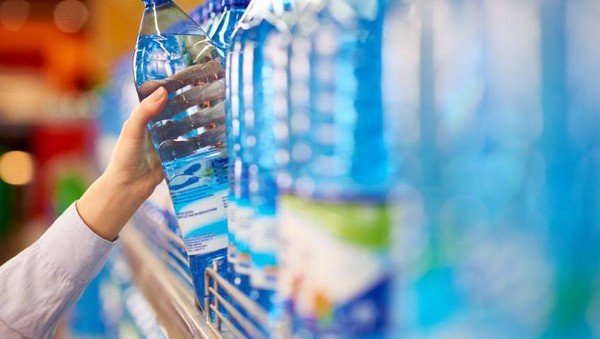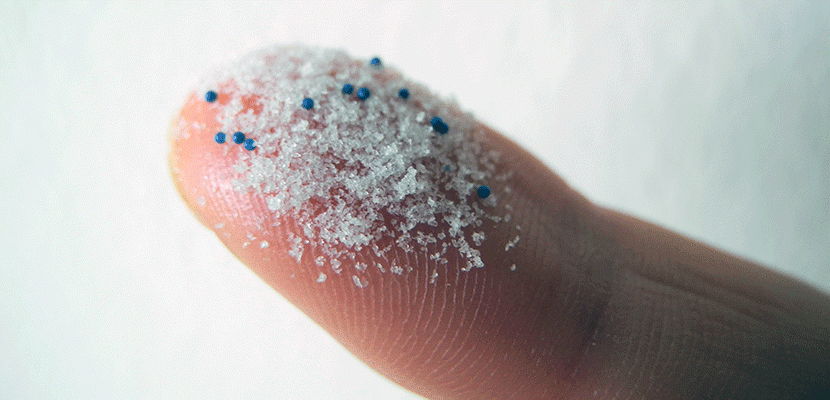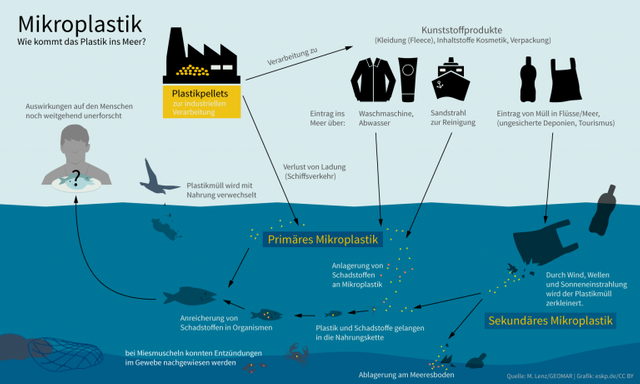These Particles (Microplastic) Are Called Inside Packaging Water, What Is Microplastic And What Are The Impact For Your Health When Consuming It?

Steemians - The society is currently being overwhelmed by the researchers' discovery of plastic particles in some bottled water.
This is reasonable because the nature of these hard-to-break plastic particles makes them a threat to the environment, especially human health.
What exactly is microplastic?
According to environmental experts from Sebelas Maret University, Prabang Setyono, microplastic is a plastic with microscopic size or size that can not be seen with the naked eye.
"Particles of plastic fibers are microscopic, and for this most of the size of microplastic is not more than 5 millimeters. There is also a mention of its size from 1 millimeter. This means the size can be smaller than the hair tick (Pulex irritans) or Sagitta setosa plankton," said Prabang.
When accumulated in a certain amount, microplastic potentially disrupt the human body metabolism.

Meanwhile, the LIPI oceanographer, Muhammad Reza Cordova, said, based on the source, microplastic can be grouped into two, namely primary and secondary.
"The primary group means microplastic is made in small size, usually used in cosmetics, often called microbeads," said Reza.
While the secondary group is a plastic that size smaller because of natural factors such as ocean waves, ultraviolet heat, and bacteria. For example, a crackle bag in the sea that size smaller because of the influence of nature.
Real Microplastic Threats For Ecosystems!

It turns out Mikroplastik can threaten an ecosystem especially aquatic ecosystems, Why?
As already explained above that Microplastic is a small particle of plastic measuring less than five millimeters is a river and marine pollutant along with chemical contaminants. These particles are derived from cosmetics such as scrubs or synthetic fabrics and from plastic packaging.
It is common knowledge that in the sea we are very much containing plastic waste. Which is where the garbage gathered in the sea through the river flow where many residents who live along the river and dump their garbage in the river.
Research on the presence of microplastic in seawater has shown that microplastic can be found almost everywhere - at sea level, near rivers, on shore and even in deep ocean sediments.
"Measurements made in Europe, South America and North America, Africa and Asia show that up to several hundred thousand microplastic particles can be found per square kilometer of water." said Christiane Zarfl.
In addition, concentrations are higher in densely populated areas, intensive agriculture and nearby industrial environments. This happens because the sewage treatment plant still has not filtered out the microplastic net.
According to data released by NationalGeographic, scientists collect amphipods from the Mariana Trench and other deepwater trenches, and find that they have man-made plastic fibers in their digestive tract. There is no place in the ocean that escapes plastic waste pollution, even in the Mariana Trench, the deepest part of the ocean on Earth.
Some small plastic pieces found in the animal's digestive tract are fibers such as rayon, lyocell, hemp, nylon, polyethylene, polyamide, and polyvinyl. Polyethylene is a plastic used to make shopping bags and plastic bottles. Poliamide is used in synthetic fibers. Poivinil includes polyvinyl chloride (PVC), used for many objects, from pipes, soles, to credit cards.
The deep-sea organisms get their food from snack fragments that fall into the deep ocean. So when small plastic fragments join the food, it may be inedible. And the fish will be caught and consumed by humans and unknowingly we also consume these microplastic particles.
Plastic waste is very dangerous and can damage the environment, therefore many social and government agencies are promoting plastic waste recycling. But, unfortunately, human consciousness to sort out organic and non-organic waste is still very low.
Indeed, until now the researchers have not been able to ensure real bad effects of consuming microplastic for health.
However, the dangers of human food sources exposed to microplastic (plastic 1-5000 micron-red size) may present serious health problems later in life.
Therefore let us take care of our environment by starting not to throw away plastic samaph indiscriminately and start to apply wisely by sorting organic and non-organic waste for easy to overcome. Love your habitat and your surroundings now, if not us. Who else?!
Thanks
Edited by @ardian27
Article: kompas.com, undip.ac.id.